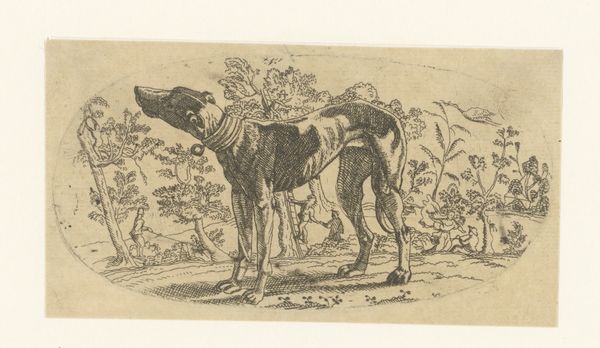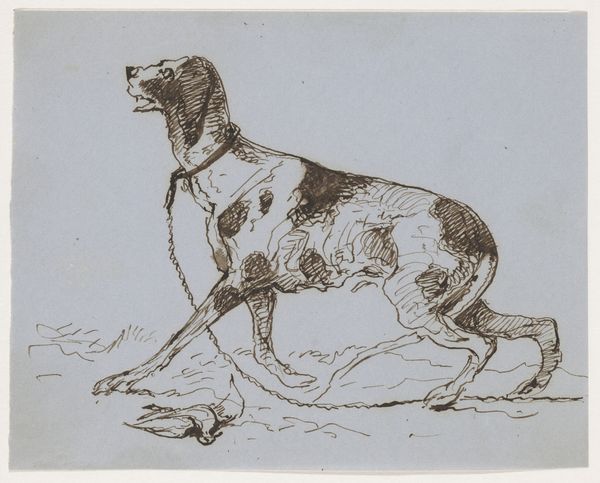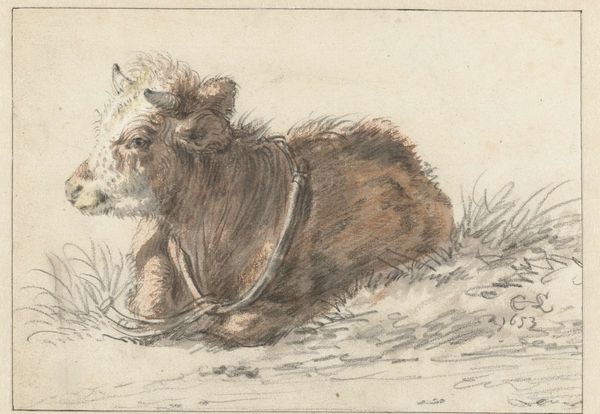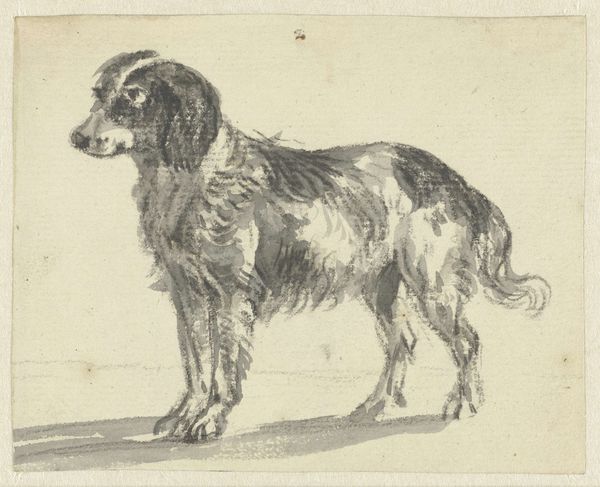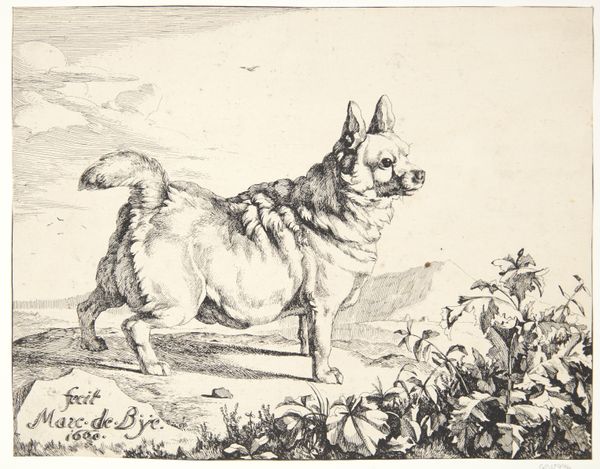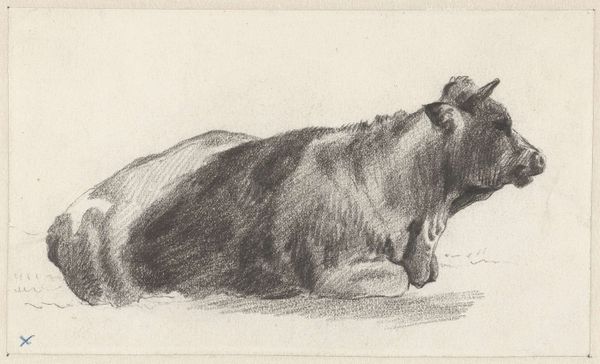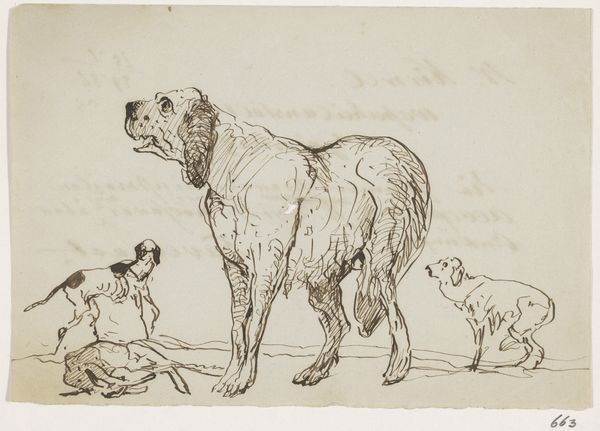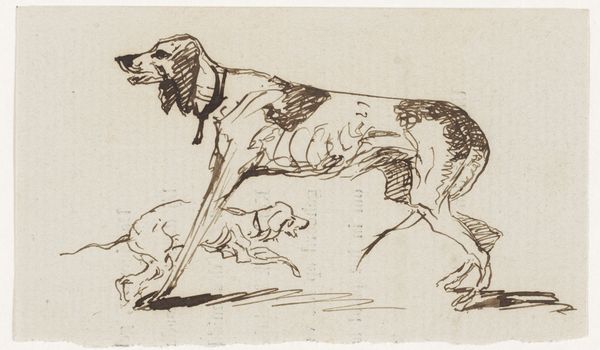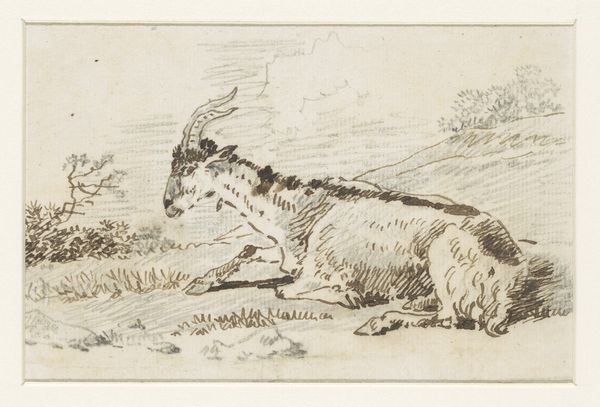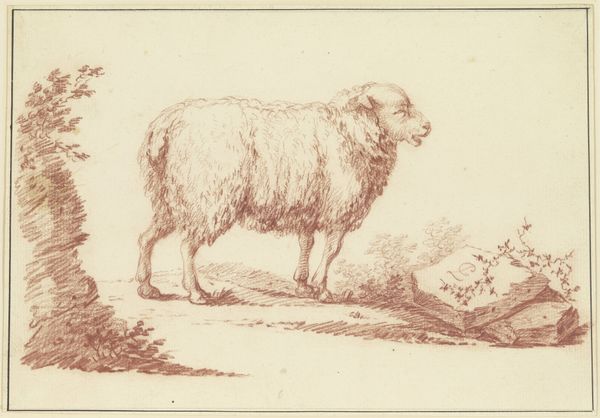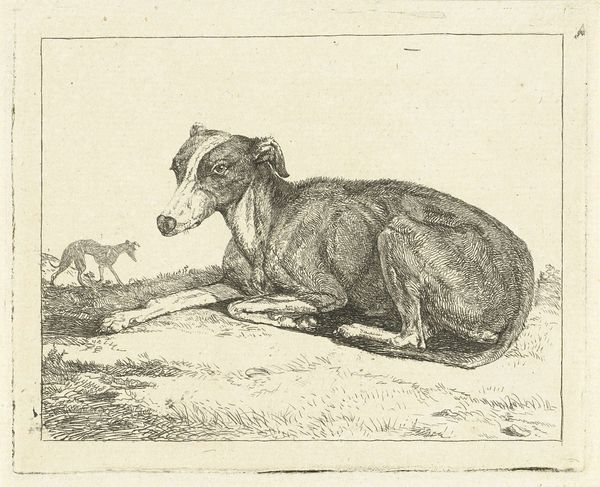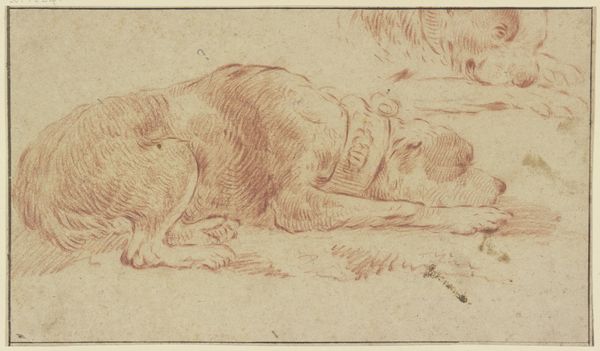
drawing, pencil, charcoal
#
drawing
#
pen sketch
#
pencil sketch
#
landscape
#
figuration
#
pencil
#
pencil work
#
genre-painting
#
charcoal
#
realism
Dimensions: height 200 mm, width 293 mm
Copyright: Rijks Museum: Open Domain
Curator: Immediately, I'm struck by the textural contrasts here; the rough fur of the bear rendered with what looks like rapid, almost frenetic, pencil strokes against the smooth, bare tree trunk. Editor: Indeed. What we have here is "Bear tied to a tree," a drawing by Cornelis Saftleven dating from 1649. The artwork is made with pen, pencil and charcoal on paper. Curator: Looking closer at the materials used and their distribution, I can almost feel the texture of the paper itself – a coarse, absorbent ground that seems to have guided Saftleven's hand. It makes me wonder, was paper like this readily available? How did this specific type of paper affect the final image? Editor: That is an interesting point! It also makes me consider the context in which Saftleven produced this drawing. In the 17th century, captive bears were unfortunately a relatively common sight in Europe, often used for entertainment in blood sports or displayed as symbols of power. So Saftleven’s seemingly simple drawing is, in essence, tied to social and political aspects. Curator: Exactly. And even beyond that obvious connection, consider the bear’s collar, or what seems to be its rope restraint. The use and manipulation of base materials such as hemp or metal give an even more material presence to themes of captivity and control. Editor: And don't forget that Saftleven isn’t creating this in a vacuum; the sketch performs its role in the economy of images in circulation at the time. Who would view this? And in what settings? Were there any societal debates related to it, for instance? Curator: Considering all of that, Saftleven presents us with an image whose social value stems directly from the artist's choices in deploying materials, each embedded within a network of labour and symbolic significance. The physical means are crucial. Editor: I agree. It shows how art reflects not just aesthetic choices, but deeply entrenched cultural attitudes and the power dynamics that were at play. A lot of elements come into play. Curator: Definitely gives a lot to think about for such a seemingly simple drawing. Editor: It certainly does, and demonstrates the power of art to reflect the world around it.
Comments
No comments
Be the first to comment and join the conversation on the ultimate creative platform.
